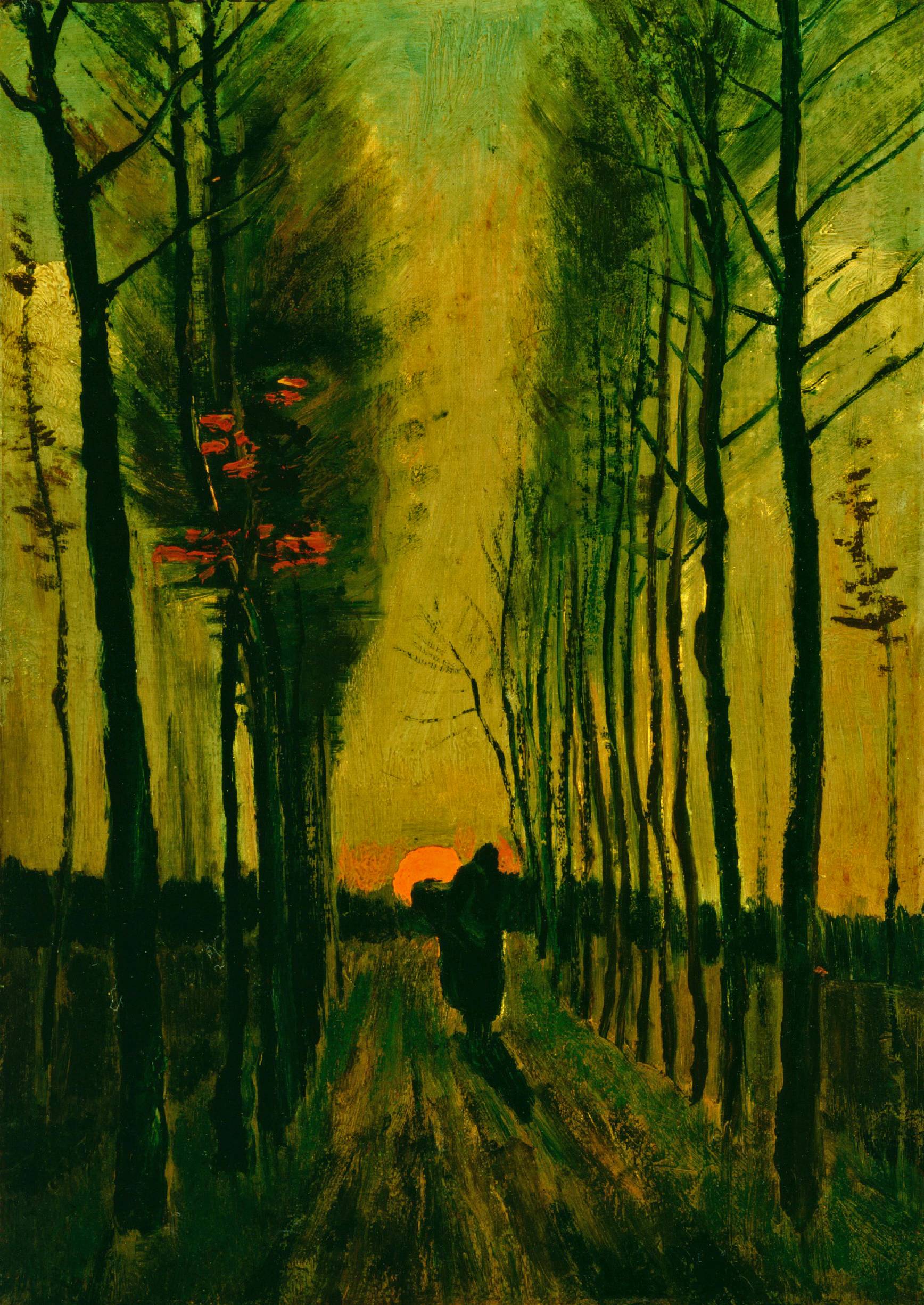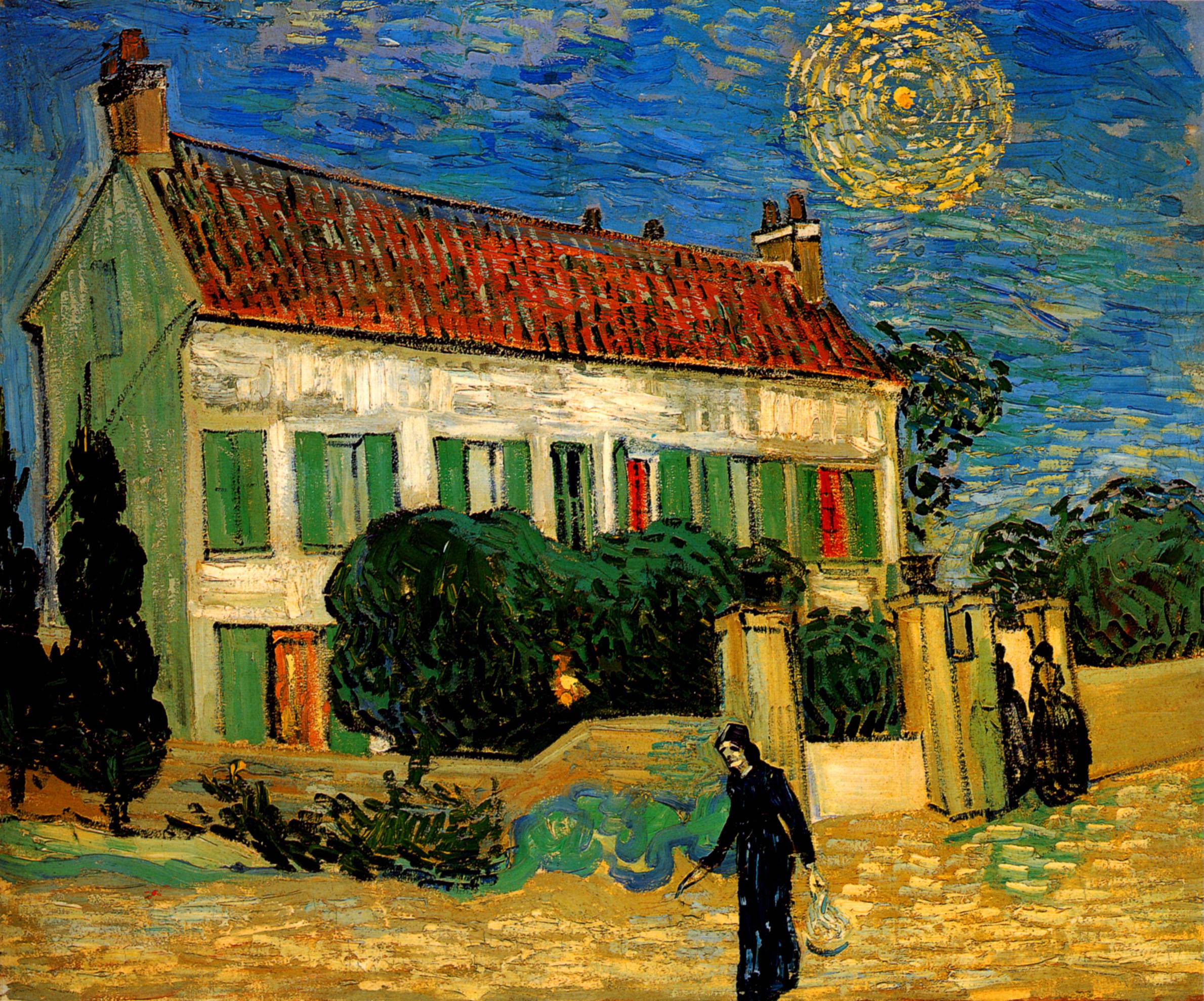
In his iconic painting, Lane of Poplars at Sunset, famed Dutch master Vincent van Gogh depicted the glowing orange disc of the setting sun low on the horizon, centered on a long, straight lane flanked on each side by a row of skeletal poplar trees nearly bare of leaves.
It is a scene strikingly similar to New York’s “Manhattanhenge,” where the setting sun aligns with Manhattan’s numbered streets on dates near May 29 and July 12 annually. Hayden Planetarium Director Neil deGrasse Tyson drew attention to the phenomenon in 2001 and it has remained a popular event ever since.
Those similarities caught the attention of Texas State University astronomer, physics professor emeritus and Texas State University System Regents’ Professor Donald Olson, who suspected astronomy could determine when and where van Gogh painted this striking scene more than 130 years prior. Utilizing his distinctive brand of celestial sleuthing, Olson had previously dated three of van Gogh’s famous paintings: Moonrise (Wheat Stacks), Road with Cypress and Star and White House at Night using similar methods.
Olson’s instincts proved correct. With assistance from Louis Verbraak and Ferry Zijp, members of the Eind¬hoven Weather and Astronomy Club in the Netherlands, Olson determined that van Gogh painted Lane of Poplars at Sunset shortly before sunset on Nov. 13 or 14, 1884 along a straight stretch of road known as Weverstraat in the Dutch town of Nuenen.

The team’s findings are published in the November 2024 issue of Sky & Telescope magazine, on newsstands now. Olson’s first order of business was determining where the lane existed.
“If we could identify the lane on 19th-century maps, then we’d be able to establish the compass direction of the road appearing in the artworks,” Olson explained. “Next, we could use astronomical calculations to determine the date when the disk of the setting sun aligned as van Gogh portrayed it.”
For historical research, van Gogh’s paintings are referenced by their catalog numbers as assigned by Dutch art historian Jacob Baart de la Faille in his 1928 compilation of the artist’s complete works. Lane of Poplars at Sunset is assigned F123. As Olson investigated further, he discovered catalog painting F122, known today as Lane of Poplars in the Autumn, must depict a scene earlier that autumn. The trees in Lane of Poplars in the Autumn have abundant leaves with vivid fall colors, while the leaves are almost completely gone from the trees in the sunset depiction.
Art historians have long depended on van Gogh’s many letters to his brother Theo to date most of the artist’s work, and Olson turned to these to see if either F123 or F122 were mentioned. A total of three letters, written by Vincent during late October and early November of 1884, describe the lovely autumn weather he was experiencing. Letter 467, dated on or about Oct. 25, 1884, includes a description that matches Lane of Poplars in the Autumn: